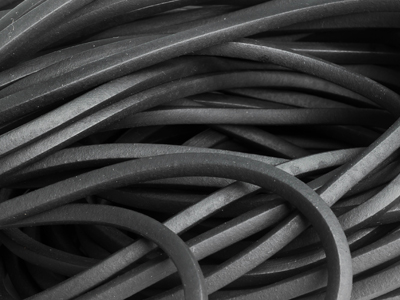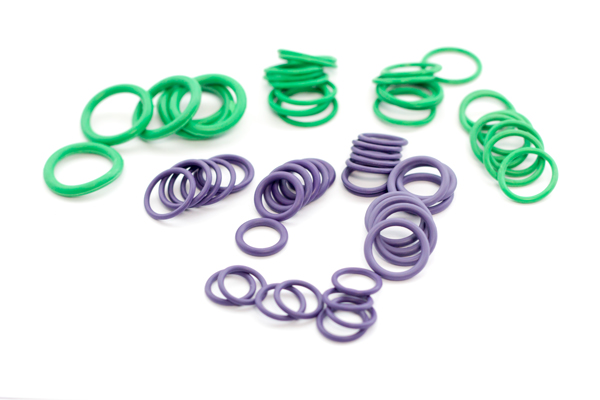NBR Nitrile

Nitrile rubber, which is also called as acrylonitrile butadiene rubber, Buna-N, and NBR, is a synthetic rubber copolymer of the composition of acrylonitrile (ACN) and butadiene. Perbunan, Nipol, Krynac, and Europrene are well-known trade names.
Since NBR's operating temperature ranges between −40°C and 108 °C (−40°F and 226°F), it can be reliably used in aeronautical applications.
NBR shows high resistance to vegetable oils, mineral oils, benzene/petrol, diluted acids, and alkaline chemicals, and ordinary diluted acids.
Features & Applications
Features
- Its resistance to oils and acids and its strength are better than those of natural rubber, however, it has low flexibility compared to natural rubber.
- Offers superior option for sealing applications
- Shows good compression set resistance
- Shows abrasion resistance
- Has high heat resistance
- Good resistance to water
- Resistance to gas permeability
- Can be compounded with other elements to improve the operating temperature up to 121°C (250°F)
Applications
- printer's form rollers
- tubing
- hoses
- molded shapes
- O-rings
- connectors
- gaskets
- roller bumpers
- oil seals
- striper rubber
- V belts
- rotating heads
- (BOP) Blowout preventers
- disposable non-latex gloves
- synthetic leather
- automotive transmission belts
Machining Options

Other Information
Nitrile Properties
- Common Name: Buna-N, Nitrile, NBR
- ASTM D-2000 Classification: BF, BG, BK
- Chemical Definition: Butadiene Acrylonitrile
- Resistance
- Oil Resistance: Good to Excellent
- Abrasion Resistance: Excellent
- Tear Resistance: Good
- Resistance: Good to Excellent
- Aging Weather/Sunlight: Poor
- Tensile Strength
- Tensile Range (P.S.I): 200-3000
- Elongation (Max %): 600
- Temperature Range
- Low Temperature Usage: -30°F to -40°F | -34°C to -40 °C
- High Temperature Usage: Up to 250°F | 121°C
- Durometer (Hardness) – Range: 20-95 Shore A
- General Characteristics
- Adhesion to Metals: Good to Excellent
- Compression Set: Good
- Resilience/ Rebound: Good









